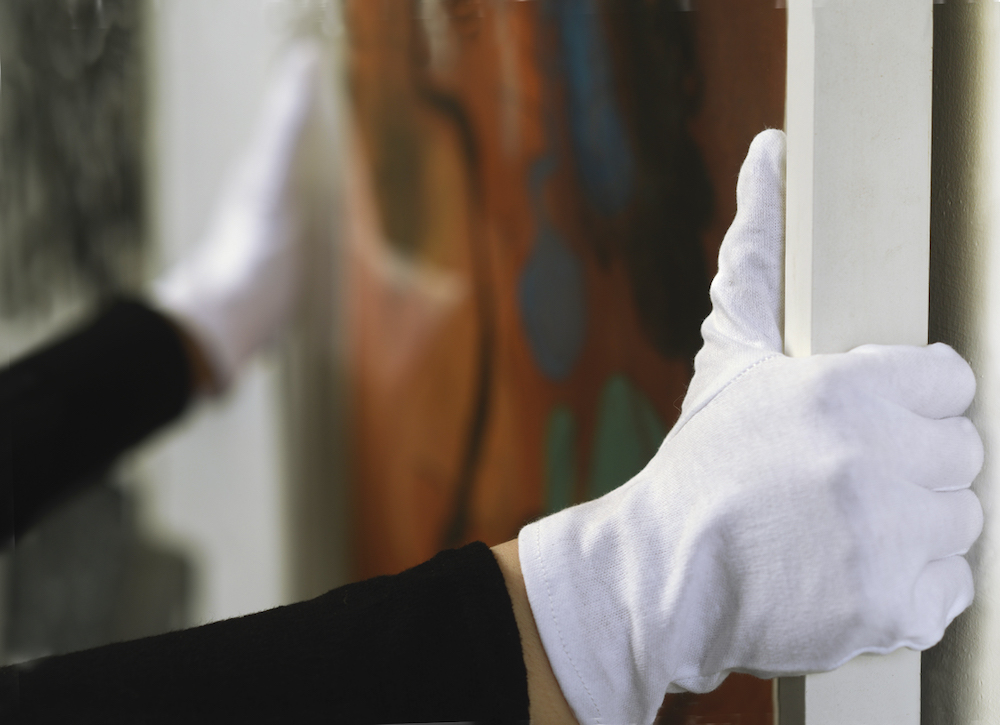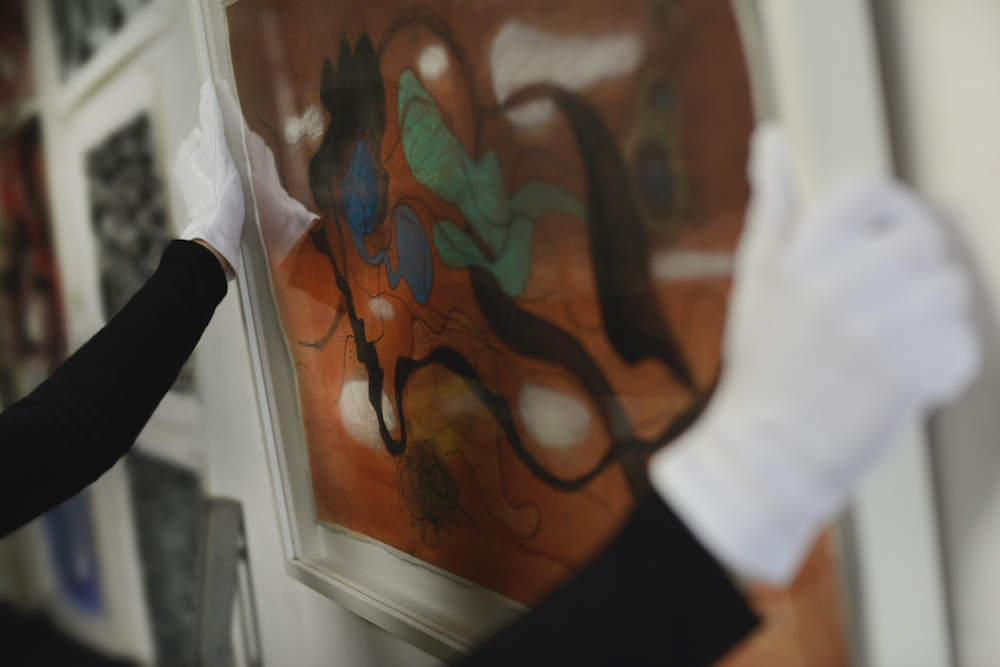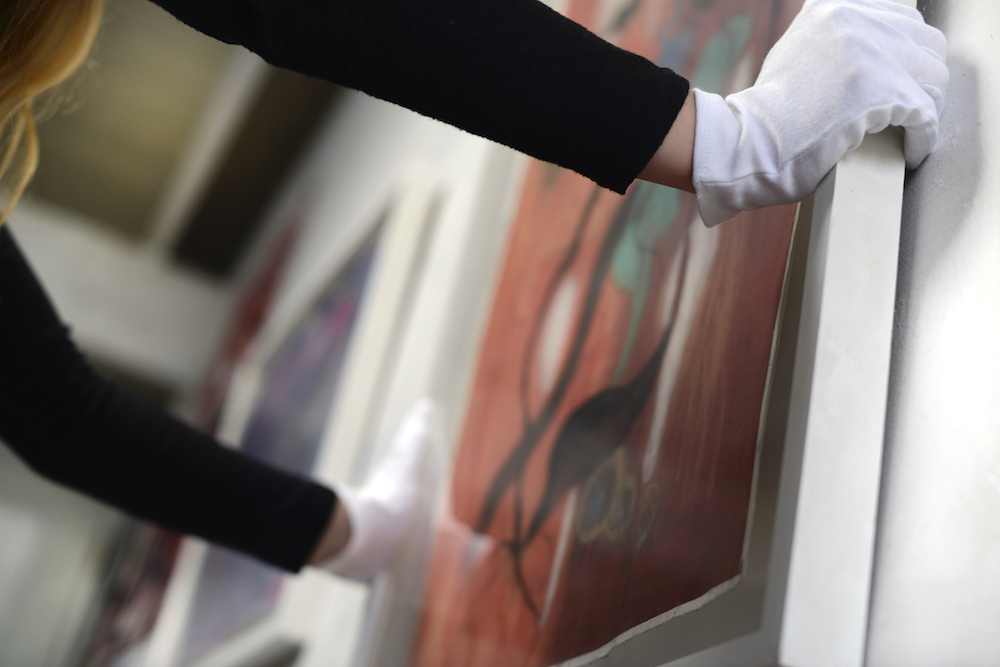What sort of working environment will the Los Angeles arts workforce return to once the worst of the COVID-19 pandemic is over? Or maybe a better question to ask is: How will we honor the skilled work of the preparators, installers, instructors, docents, assistants and more, whose combined efforts are semi-invisible to the public, yet without whom everything would fall apart?
Pre-COVID labor conditions were not always ideal for the average arts worker. One can peruse the Instagram account called @cancelartgalleries (its first post was on July 11, 2020) for a glimpse into the sort of abuse, neglect and underpayment that gallery staff have suffered throughout the years. Interns and assistants from Los Angeles and New York to London are sharing their accounts of maltreatment by some of the most blue-chip outfits you can think of. Additionally, many gigs associated with the deployment, installation and de-installation of gallery exhibitions were handled by independent contractors. Sometimes arts organizations hired permanent employees for these roles. As a consequence of the lockdown last summer, however, most of these workers saw their incomes freeze in an instant, with independent contractors especially wondering how they would survive.
I spoke with Prima, a freelance art handler (who uses they/them pronouns) about their experience in the spring of 2020. “There were just no jobs,” they said. “And there wasn’t anything that I could do about it. I’m in the US on an artist visa, which doesn’t allow me to apply for any federal aid.” Born in Thailand, Prima was slated to begin a well-paid contract with an LA museum when the lockdown mandate brought California to a halt. Another of Prima’s clients includes a gallery that they, for privacy reasons, leave unnamed. “I was able to readapt my skillset for an online version of the exhibition space,” Prima said. This, by its nature, is much safer than the work they were doing before the pandemic.

Safety for the art worker has probably never been as high a priority as it is now. In the entertainment industry, studios, producers and unions spent months deliberating over COVID production process standards. Billions of dollars were on the line for them; they could not afford to wing it. From those deliberations rose a new profession: the COVID Safety Officers, and their teams. On the flip side, by nature of the art installation process, the art world does not have an equivalent emergent role. In 2019, a preparator named Evelia transitioned away from her contract work for museums such as CAAM and the Hammer to become fulltime and salaried at an LA-based gallery. “Thankfully I’ve been working throughout this whole period. But I do know plenty of freelance workers who have been struggling.” As a former freelancer who is now in the position of hiring freelancers, safety is foremost in her mind. The workforce at the gallery that employs her has gone as remote as possible. She has tightened the pool of freelance talent from which she’ll hire for exhibitions—what may once have taken six people to do is now reduced to two at the most. To protect staff, in-person viewings of art are limited to one day a week and the gallery is producing online exhibitions. “People want to work, but under what conditions? And galleries can only promise so much, museums can only promise so much.”
Evelia says that one consequence of the pandemic is maintaining relationships with preparators at other institutions in a way that she never did before, simply because everyone is sharing resources and information about what is and isn’t working as they develop COVID safety procedures. “I think that there’s no interest in moving away from real exhibitions,” Evelia replies, when I ask for her opinion about what the future looks like for the gallery. “We are working under the assumption that things will get better. Maybe not like before, but with certain measures, things can be safe enough that someone could experience art in person.”
A safe post-COVID gallery or museum experience will be determined by how well its semi-invisible workforce is taken care of. Unlike in the entertainment industry, installation crews are rarely unionized, nor are their workplace standards governed by OSHA or a similar organization. And independent contractors have no work guarantees. “I still feel that we [as freelancers] are considerably underpaid and that we haven’t been afforded the substantial help that a part-time or fulltime employee would,” said Prima. There was some work that became available to them soon after the pandemic began, but as they didn’t have good health insurance, they sometimes declined: “As time went by and it seemed we weren’t going to come back to normal, I started taking some gigs. And it makes me feel a little compromised.” Prima also maintains their own art practice, which is why they made the choice to remain independent. “I made a conscious and empowered choice to do this kind of work. That doesn’t mean that I shouldn’t want things to be much better.”

Just this January, the Center for Cultural Innovation commissioned the Urban Institute to research and author a report addressing the plight of the California-based art worker from the standpoint of worker classification: freelancer vs. employee. It’s titled “Arts Workers in California: Creating a More Inclusive Social Contract to Meet Arts Workers’ and Other Independent Contractors’ Needs.” It arrives on the heels of the passage of last year’s controversial AB5 bill. The bill’s author and advocates meant well in trying to protect all sorts of gig workers from rampant misclassification, yet ultimately AB5 harmed many of these workers in the process.
Thankfully, the report isn’t just an accumulation of facts and data; the coauthors also spent time providing solutions for arts workers to build power. One macro-level solution could be to reform federal labor law so that independent contractors could collectively bargain. On the local level, one option could be scaling worker co-ops to include creative workers. While the report is available for download on both CCI and Urban Institute websites, they make it clear that the views expressed are the authors’ alone—six diverse experts, researchers, and fellows who regularly work on matters of workforce development, racial justice in employment and other pertinent social issues. That such an institutional effort was made is a testament to the times we live in. We are seemingly at a boiling point in our society when it comes to worker treatment—our previous ways of working are fast becoming unsustainable. Hopefully, the decision-makers for California’s museums and galleries and arts nonprofits take this report to heart.
Photography by Lara Jo Regan, 2021


